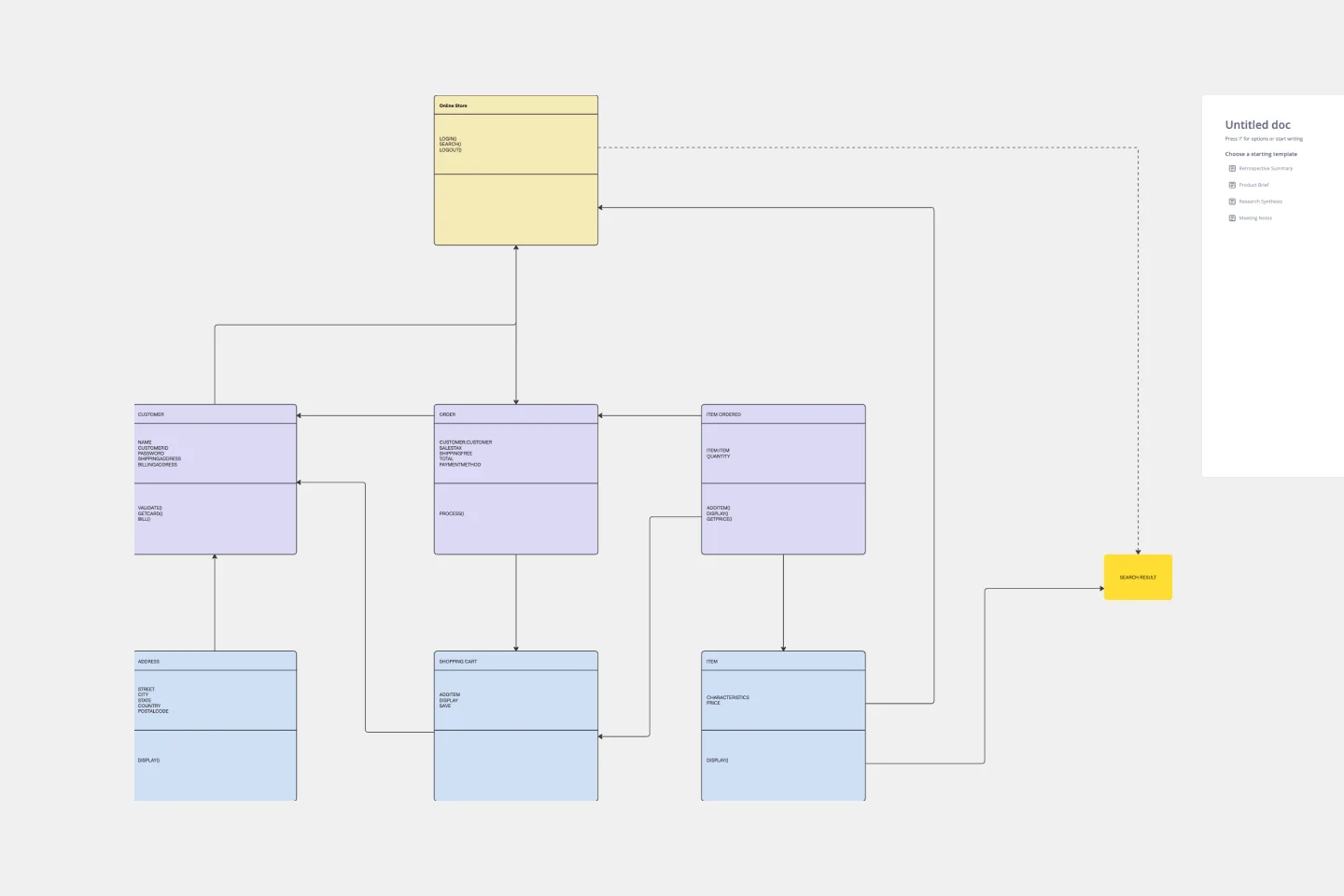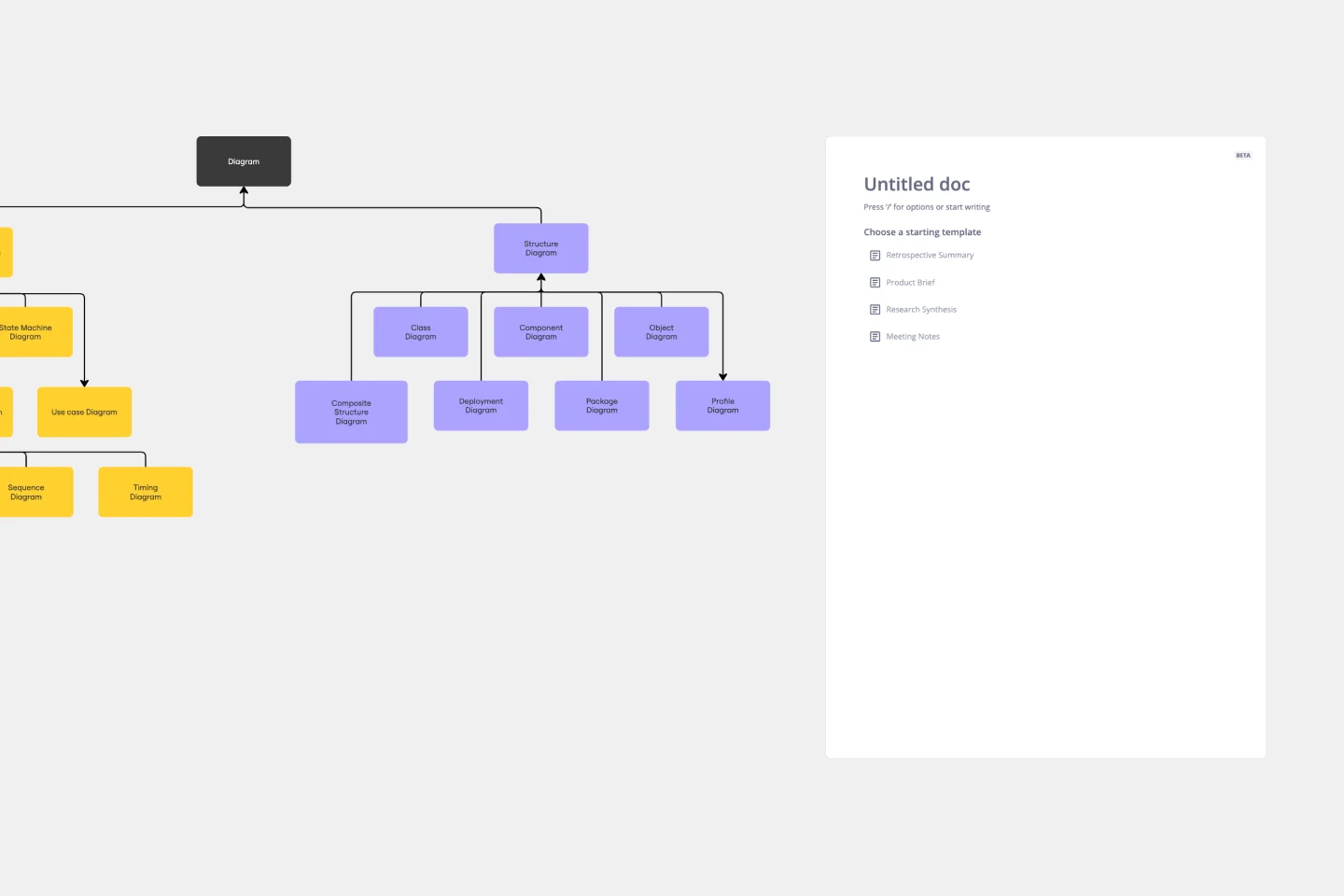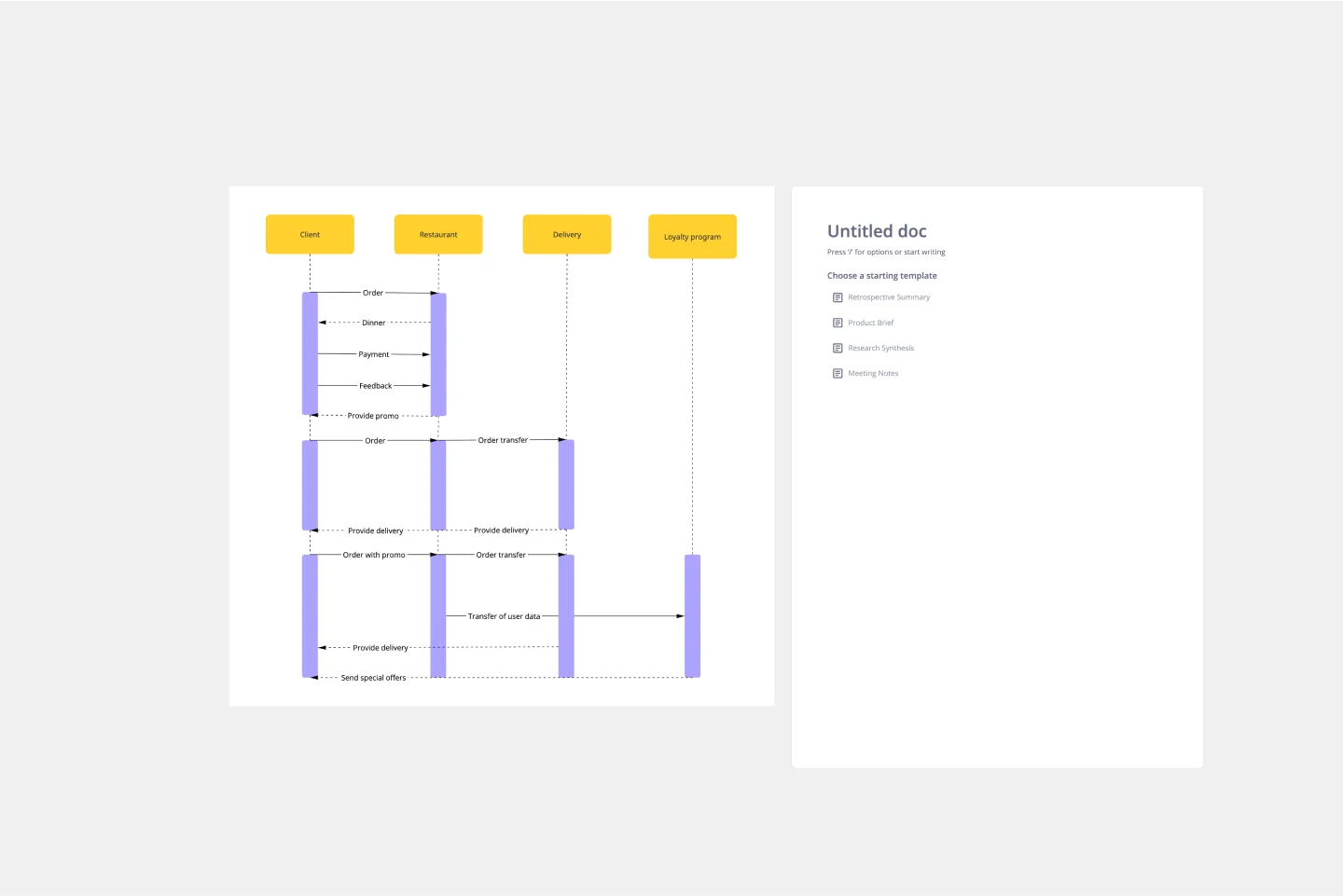About the UML Class Content Management System (CMS) Template
The UML Class Content Management System (CMS) Template is a designed blueprint that helps visualize the structure of a CMS. This template showcases the key classes and their relationships within a CMS, illustrating how users create, manage, and publish digital content such as articles, comments, and files. It serves as a map, detailing the classes or objects in the system, their attributes, methods, and the relationships among them, including inheritance, association, aggregation, or composition. This visual representation is invaluable for understanding and documenting the architecture of a CMS.
How to use the UML Class Content Management System (CMS) Template
Customization: Once the template is added to your board, you can collaborate with your team in real-time or asynchronously to customize the diagram. This involves tailoring the classes, attributes, methods, and relationships to fit the specific requirements of your CMS.
Collaboration: Use Miro's collaborative features to brainstorm designs, leave feedback, and discuss the UML diagram with your team. The real time update capability of Miro boards ensures that everyone is always looking at the latest version of the diagram.
Use tools: For building UML diagrams from scratch or further customization, you can use Miro AI or UML shape packs available within Miro. These tools can help in automatically generating UML diagrams or adding specific elements to your template.
Review and iterate: Review the UML diagram with your team, making use of Miro's commenting and feedback tools. Iterate on the design as necessary to ensure it accurately represents the CMS architecture you are documenting.
Why use the UML Class Content Management System (CMS) Template
Using the UML Class Content Management System (CMS) Template in Miro has several advantages:
Clarity: It provides a clear and structured visualization of the CMS architecture, making it easier to understand the system's components and their interactions.
Efficiency: The template accelerates the documentation process, allowing you to quickly map out the CMS structure without starting from scratch.
Collaboration: Miro's platform is designed for seamless collaboration, making it easy for teams to work together on the UML Class Content Management System (CMS) Template. Team members can contribute, edit, and comment in real time, ensuring that everyone's insights are incorporated. This collaborative environment fosters a more inclusive and comprehensive design process.
Flexibility: The template is highly customizable, allowing teams to adapt it to their specific project needs. Whether you're working on a small-scale CMS or a complex, enterprise-level system, the template can be tailored to suit your requirements. This flexibility ensures that the UML diagram remains relevant and useful throughout the development process.
Visualization: A well-structured UML diagram, like the one provided by this template, offers a visual representation of the system's architecture. This makes it easier to identify potential issues, understand the flow of data, and communicate complex ideas to stakeholders who may not be familiar with UML notation.
Documentation: Using the UML Class Content Management System (CMS) Template helps create comprehensive documentation of your CMS's architecture. This documentation is invaluable for onboarding new team members, facilitating maintenance, and providing a reference for future development efforts.

Miro
Your virtual workspace for innovation
Miro is an innovation workspace designed for teams of every size, everywhere, to dream, design, and build the future together. Our mission? To empower these teams to create the next big thing, powered by AI at every step of the way. Over 90 million users around the world rely on Miro to untangle complex ideas, put customer needs first, and deliver products and services faster. All supported by best-in-class security, compliance, and scalability.
Categories
Similar templates
UML Diagram Template

UML Diagram Template
Originally used as a modeling language in software engineering, UML has become a popular approach to application structures and documenting software. UML stands for Unified Modeling Language, and you can use it to model business processes and workflows. Like flowcharts, UML diagrams can provide your organization with a standardized method of mapping out step-by-step processes. They allow your team to easily view the relationships between systems and tasks. UML diagrams are an effective tool that can help you bring new employees up to speed, create documentation, organize your workplace and team, and streamline your projects.
UML Class Diagram Template

UML Class Diagram Template
Get a template for quickly building UML class diagrams in a collaborative environment. Use the UML class diagram template to design and refine conceptual systems, then let the same diagram guide your engineers as they write the code.
UML Sequence Diagram Template

UML Sequence Diagram Template
Analyze and showcase how external entities interact with your system using a sequence diagram. Get a bird’s-eye view of your work processes, business functions, and customer interactions using this diagram. Also, identify any potential problems early and solve them before implementation.
UML Diagram Template

UML Diagram Template
Originally used as a modeling language in software engineering, UML has become a popular approach to application structures and documenting software. UML stands for Unified Modeling Language, and you can use it to model business processes and workflows. Like flowcharts, UML diagrams can provide your organization with a standardized method of mapping out step-by-step processes. They allow your team to easily view the relationships between systems and tasks. UML diagrams are an effective tool that can help you bring new employees up to speed, create documentation, organize your workplace and team, and streamline your projects.
UML Class Diagram Template

UML Class Diagram Template
Get a template for quickly building UML class diagrams in a collaborative environment. Use the UML class diagram template to design and refine conceptual systems, then let the same diagram guide your engineers as they write the code.
UML Sequence Diagram Template

UML Sequence Diagram Template
Analyze and showcase how external entities interact with your system using a sequence diagram. Get a bird’s-eye view of your work processes, business functions, and customer interactions using this diagram. Also, identify any potential problems early and solve them before implementation.